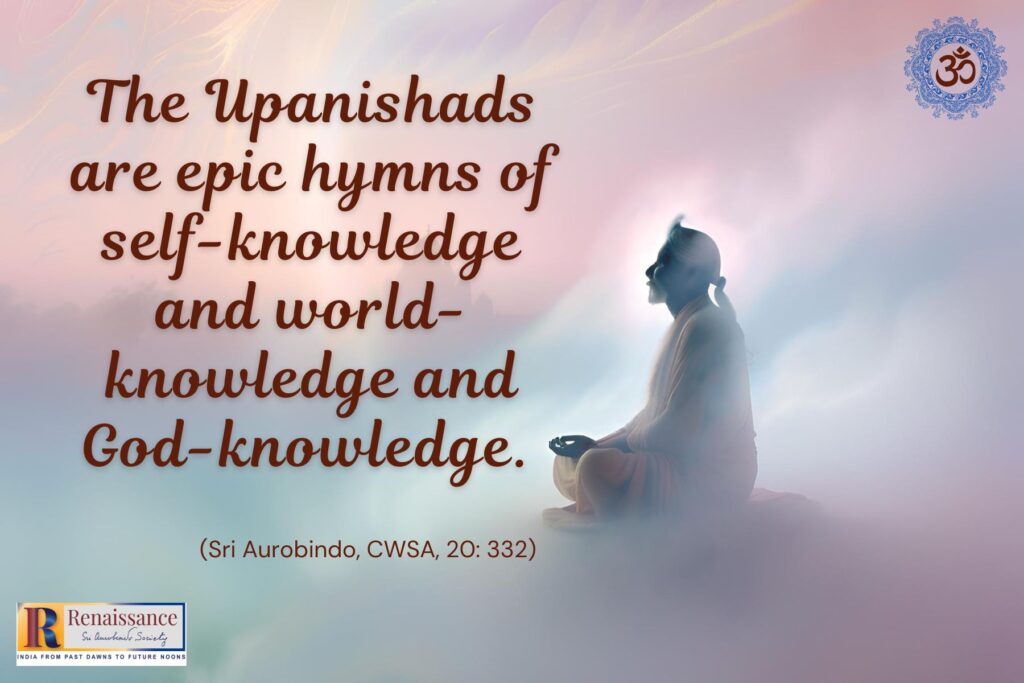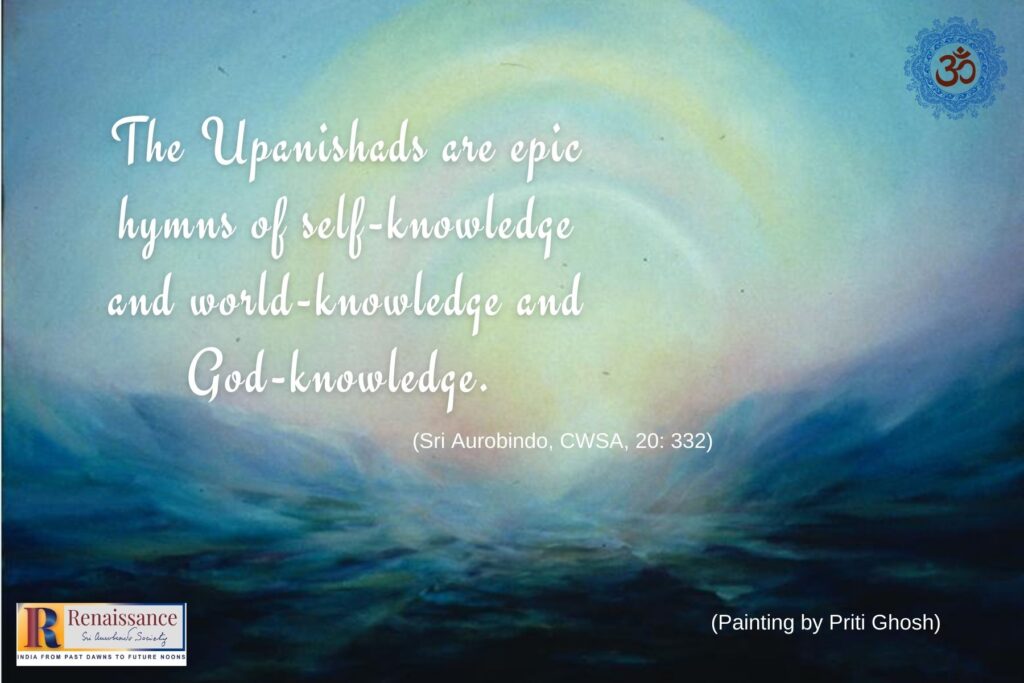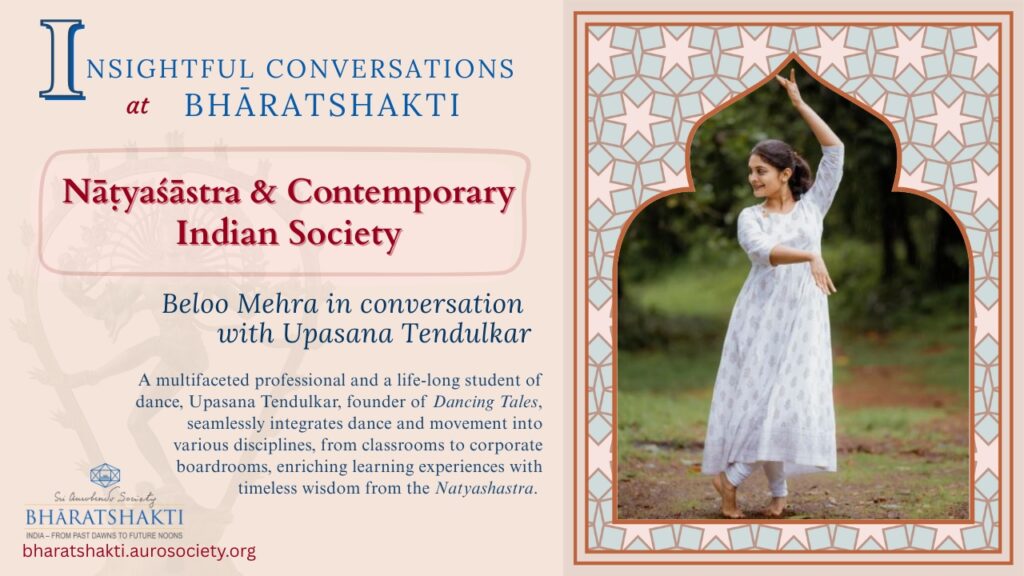Editor’s Note: This photo-essay takes the reader on a virtual walk-through of Sri Veerabhadra temple at Lepaskhi. The entire feature will be presented in 3 parts, 2 of which are included in the present issue. The first part focuses on the exterior of Veerabhadra temple, pointing out its magnificent architectural and sculptural beauty.

“Le Pakshi!” said Sri Rāma to Jatayu.
Grief-struck Rāma and Lakshmana had been desperately searching for Sitā when they met Jatāyu. Sita had mysteriously disappeared one afternoon when both the brothers were gone in chase of a golden deer. (Rāma had gone first, but then Sitā feeling concerned about her husband compelled Lakshmana to go and look for his elder brother.) When the brothers returned Sitā was missing.
This happened at a place near the modern day Nāsik.
Rāma Meets Jatāyu
In their frantic search for Sitā, they saw some pieces of her jewellery scattered around and started following the trail. They came across a badly mutilated big bird called Jatāyu, struggling with his last breath.
Wondering if this big bird was the one to kidnap Sitā, the brothers approached with caution and sympathetically inquired about the cause of his state. Jatāyu introduced himself as the son of Aruna, the charioteer of Surya, and a nephew of Garuda, the vehicle of Lord Vishnu. He informed the brothers that he had seen a rākshasa named Rāvana forcefully taking Sitā on his vimāna (flying vehicle).
Jatāyu had tried to free Sitā and fought against Rāvana with all his strength. But being too old he was no match for mighty Rāvana who chopped off his wings. Badly injured he fell on top of a small hill. And there he waited for the arrival of the brothers to convey the news of Sitā’s abduction.
Having done his divine service for the Lord, Jatāyu gave up his body. Sri Rāma in his infinite compassion granted him moksha. And uttered the words “Le Pakshi,” which in Telugu means “Arise, O bird.”
This is the story from which came the name Lepakshi, we are told.
This small village in Anantpur district of Andhra Pradesh is famous for its grand temple dedicated to Veerabhadra, Lord Shiva in his fiery form. A temple dedicated to Shiva in a village which gets its name from a story in the life of Rāma, an avatāra of Visnhu – this tells us something important about the vast openness, pluralism and inclusiveness of the eternal religio-spiritual tradition of this land, sanātana dharma.
Lepakshi is about 120 kilometers north of Bengaluru. Even before entering the village of Lepakshi one sees a monument dedicated to Jatāyu.

Meeting Nandi
Very close to this monument is a giant monolithic granite Nandi. It is one of the largest Nandis in the world, measuring 27ft long and 15ft high. It is proportionally accurate, and artistically decorated with a bell necklace and earrings around small horns.
The head of this Nandi is held aloft at an angle higher than what is usually seen in other Nandis. The slightly lower angle suggests an expression of submission, which is appropriate for Nandi when he is before his Lord Shiva. In most other temples we find Lord Shiva along the Nandi’s line of vision; but here one can’t see the Lord from this location. A small garden surrounds the Nandi statue making the entire place soothing and inviting.

Veerabhadra Swamy Temple
“An Indian temple, to whatever godhead it may be built, is in its inmost reality an altar raised to the divine Self, a house of the Cosmic Spirit, an appeal and aspiration to the Infinite.”
The Skanda Purāna speaks of this temple as one of the 108 most significant Shaivite temples in India. Many believe that the temple is millennia old, first built by sage Agastya. But according to the historians, the only available historical sources are the inscriptions which clearly mention the patronage of the temple by Virupanna, the representative of the Vijayanagara king, Achyuta Devarāya, in the Penukonda region where the temple is located.
During the Vijayanagara empire (1336–1646 CE), Lepakshi and Veerabhadra Swamy temple were famous as centers of trade and pilgrimage. The present-day temple complex, a glowing example of the Vijayanagara style of art and architecture, was built in the 16th century by two chieftains, brothers named Virupanna and Veeranna, during the reign of King Achyuta Devarāya (1529-1542). According to the inscriptions, the main artistic activity at the temple happened between 1531-1541 CE.

The main deity of the temple is Veerabhadra, a fierce and fearsome form of the Lord Shiva. He destroyed the yagna of Daksha, after Daksha’s daughter and Shiva’s consort Sati self-immolated in the sacrificial fire. The temple is built on top of a short hill known by the name Kurmasaila because it resembles the form of a tortoise. In addition to Swamy Veerabhadra, true to the spirit of sanātana dharma the temple also has shrines dedicated to Vishnu, Durga and other deities.
Also read
Mystery-Miracle-Magic of Halebidu and Belur
In addition to its great spiritual and religious significance this temple also attracts many enthusiasts for its magnificent sculptures. Most noteworthy are the ones we see on the pillars of the unfinished Kalyān Mandapa. The majestic Nāgalingam is spell-binding. And the mysterious footprint attributed to Mā Sitā seems out of this world. Not to forget, the beautiful murals and frescoes in the Nātya Mandapa and Ardha Mandapa are absolutely awe-inspiring.


The temple premises are typical of Dravidian temple architecture, with a large open passage as you walk in from the gopuram and a covered courtyard along the periphery wall. This covered courtyard might have served as a meeting point, housing people during calamities, hosting wedding invitees, conducting educational activities, or even as a guest house for devotees traveling from far distances.


Nāga Lingam
Walking clockwise along the courtyard and turning a corner to the right, one is awestruck with one of a kind Nāga Linga. The Nandi we met earlier on the way to the temple is facing this monolithic, 20-feet high Shivalingam covered by a seven-hooded Nāga.

People believe that the Lingam was carved at an unbelievable speed, in just in a few hours. The story goes that the chief sculptor and his associates working on the temple were on their lunch break. It turned out the cook, who happened to be the mother of one of the sculptors, was running late.
While waiting for the food to be cooked, the sculptors started carving a stone – just to pass some time. And lo and behold, a beautiful Shivalingam was finished just before the cooking was done. The sculptor’s mother was absolutely spell-bound when she saw this. She started praising her son and his team profusely, which caused an evil spell and the boulder behind the Nāga split at that instant.
This Nāga Lingam is one of the most picturesque spots at the temple, with people taking group photo and selfies.

On one side of the Nāga Lingam is a beautiful Lord Ganesha, again carved from a single stone. A snake is tied around the belly of the Lord. At the feet of Ganesha you will see his vehicle, the cutely carved mouse.
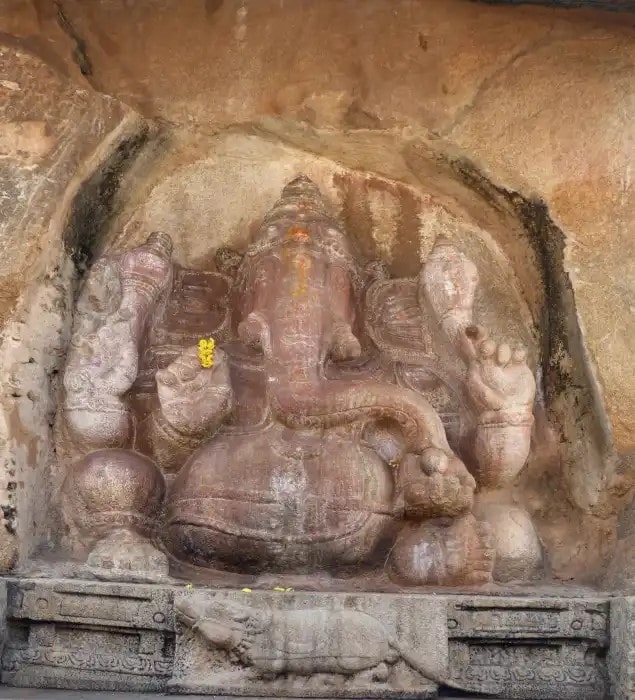
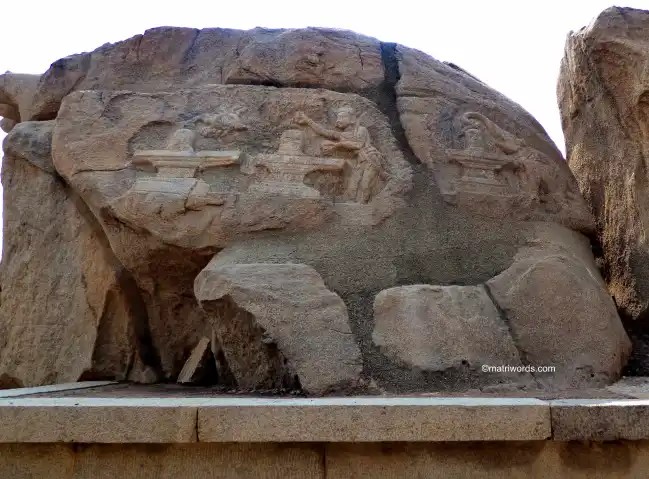
Adjacent to the Lord Ganesha is a bas-relief of a warrior praying to a Shivalingam; many believe that it is Lord Rama praying before going to Lanka for war.

Kalyāna Mandapa
A connoisseur of Indian art finds great delight walking through the magnificent kalyāna mandapa of this temple. The mandapa has 38 pillars with intricate carvings which are sure to leave you awestruck.

The story goes like this. A large open-to-ceiling pavilion was being built to commemorate the celestial marriage of Lord Shiva and Devi Pārvati. During its construction the royal treasurer was accused of utilizing the funds from the treasury without the King’s permission. The enraged king ordered Virupanna, officer in charge of the state treasury of the local government, to be blinded.
Unable to bear the false accusation, Virupanna blinded himself and threw his eyes on the wall. One can still see two red spots on a wall near the kalyāna mandapa. These are believed to be the marks left by his bleeding eye. Since then the mandapam remains incomplete. Incidentally, the word ‘Lepa-akshi‘ also means “One with painted eyes.”


No marriage celebration can be complete without guests! Naturally, all the gods and goddesses have to be present at the marriage of Shiva and Pārvati. So this kalyāna mandapa features magnificent sculptures of various gods and goddesses assembled to bless the couple!

Sita’s Foot and Around
Upon crossing the the kalyāna mandapa, one sees a large footprint. It looks as if some one had stomped on the floor with full force, making a slight cavity on the hard stone.
This footprint always has a thin layer of water in it. People there will tell you that many visitors have tried to to soak the water dry from this cavity, and mysteriously the water again seeps through keeping the footprint wet. The mystery is that no known source of water is present in vicinity!
Many believe that it is the divine footprint of Mā Sitā. When Rāvana was forcibly taking her to Lanka, in her resistance she stomped her foot on a stone. The strength of her inner being made the dent in the stone.

Across from this footprint is a shrine with with a large Shivalingam where devotees offer diyas, flowers and fruits to the Lord.

Just a little further we come across another shrine with a canopy, built in Vijayanagara style, housing a carved relief of Lord Hanumān.


Some More Views
Traditionally, temples in India were not merely places of worship and performing religious ceremonies, but served various key functions in the life of the community. They also served as educational and cultural centers. Regular classes and satsangs were held there for children and adults.
Several businesses existed and thrived because of the temples, creating prosperity for the whole community. Temples gave a stage to local artists and performers to exhibit their talents. Music, dance, painting, sculpture and all other arts flourished in the times when temples were living souls of the communities.

Temples were also the places where people would get together to socialize with one another, discuss local problems, meet with their local officials, perform marriages, and even use as rest stops while traveling.
Can you picture a group of people sitting in the cool, covered courtyard of a temple like Veerbhadra temple at Lepakshi? The old champa tree there provides the necessary shade.



